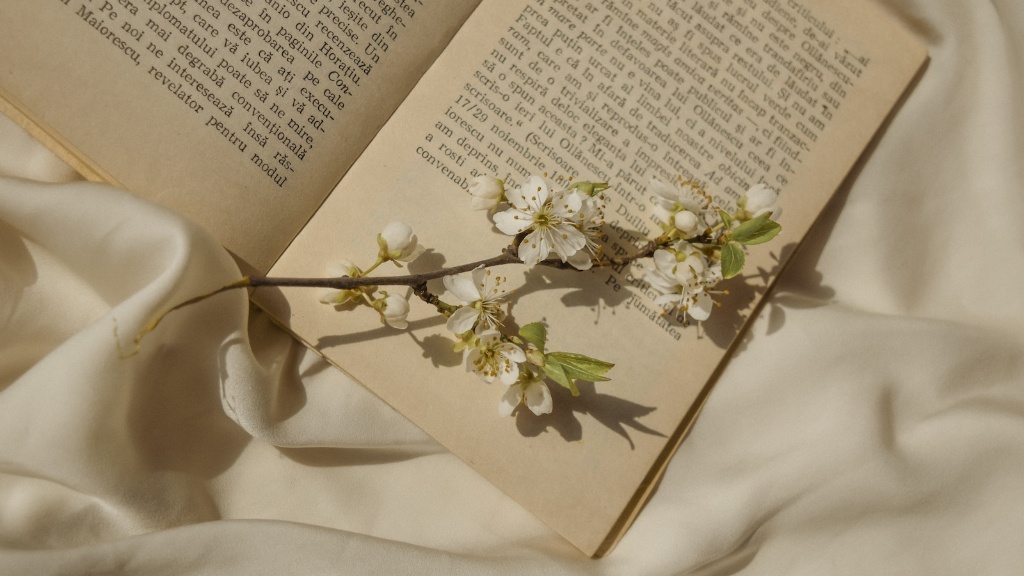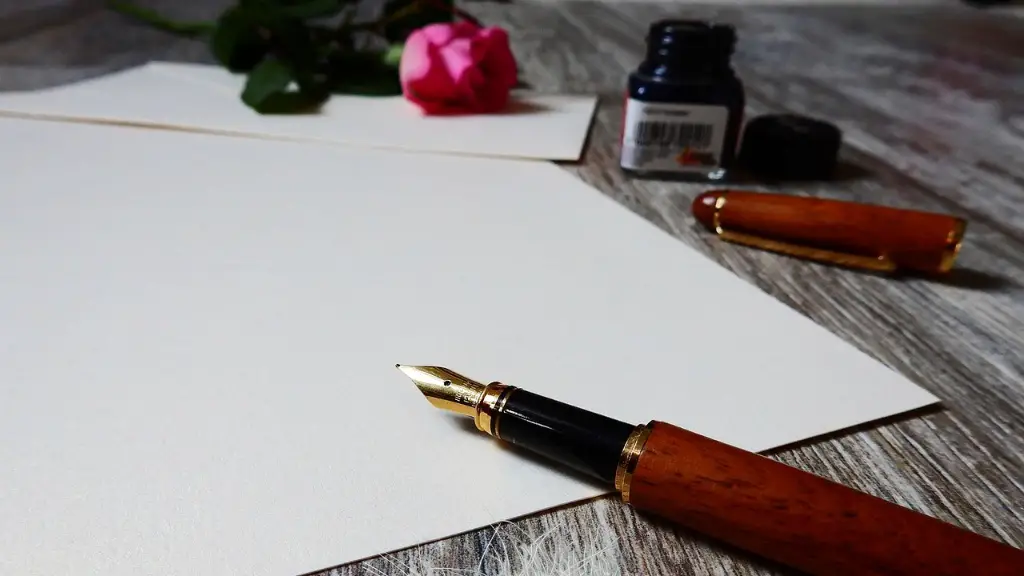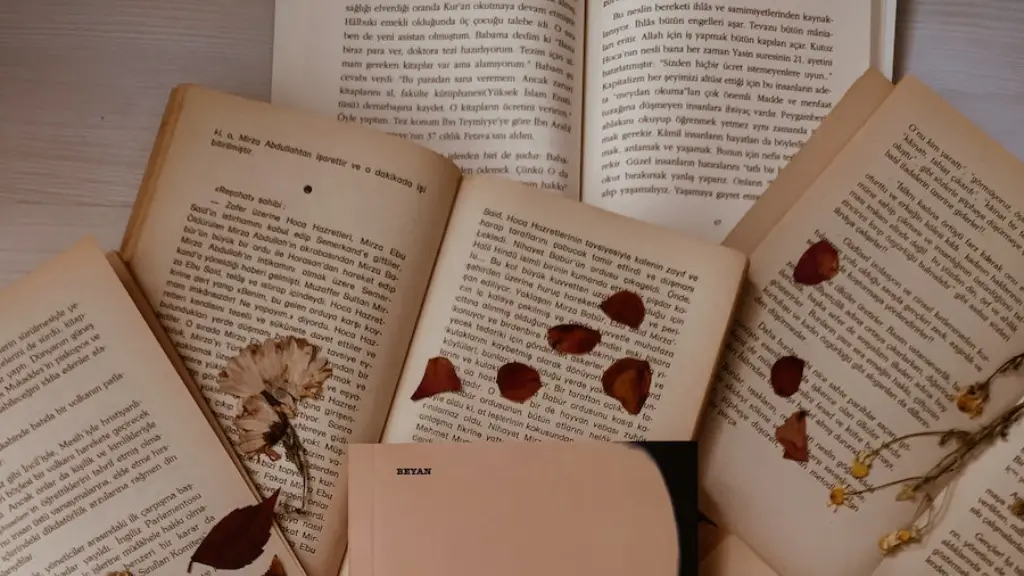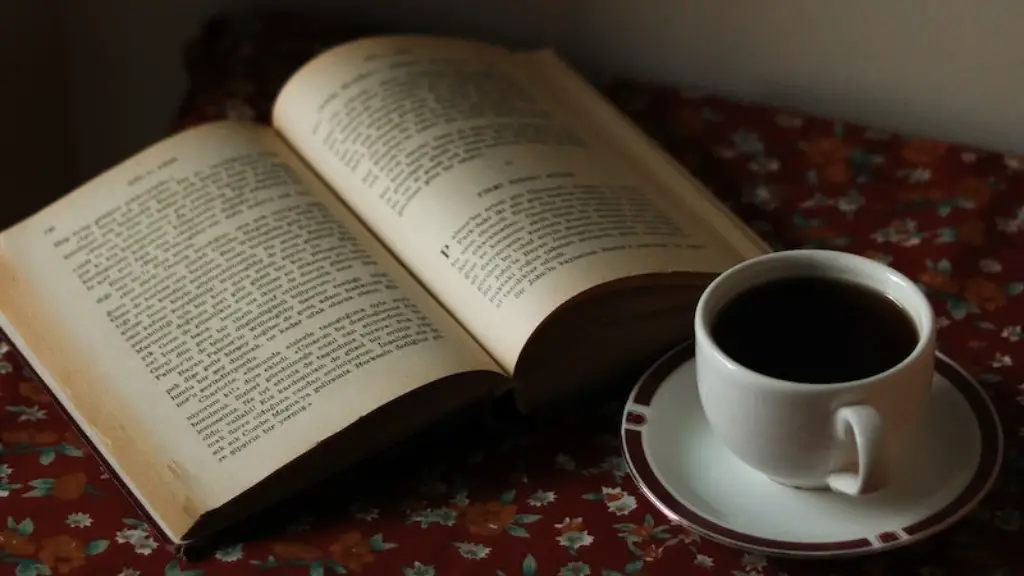Poetry is a form of literary art that is meant to express emotions and ideas in a vivid and imaginative way. It uses language to create pictures, to convey emotions, and to create a particular atmosphere. Through its expressive and often beautiful language, it attempts to capture the beauty of the world and the people in it. It can take many forms, from the simple, imagistic verses of a haiku to the complex, densely layered works of a long narrative poem. Many contemporary poets use traditional forms such as sonnets, villanelles, and ballads, while others use more modern forms such as free verse. Regardless of its form, all poetry allows the reader to experience and interpret the poet’s emotions and ideas in a unique and creative way.
A successful poem is able to capture and convey the poet’s vision while also allowing the reader to connect with it. The language must be strong and vivid, the imagery must be clear, and the emotions must be accessible. One of the most important elements of successful poetry is its rhythm, or meter. Many poems have regular meter and rhyme schemes, while others are written in a more natural, jagged rhythm. Meter and rhyme are tools that poets use to add structure and interest to their works.
A common way to learn how to write poetry is to examine examples of successful works by established poets. For instance, an aspiring poet may look to William Wordsworth’s “Daffodils” as a model of traditional lyric poetry or the intricate, imagistic verses of William Blake’s “The Tiger” as an example of intense poetic imagery. There are a variety of genres and styles of poetry, so it is important to explore a wide range of works before deciding on a particular one to focus on.
Nature Poems
Nature poems are a type of poetry which specifically deals with nature and its beauty or power. Nature can take many forms, from the wide open night sky to a small pond in the corner of a park. Nature poets often write about the beauty of the natural world and the peace that can only be found in nature. Examples of nature poems include the classic works of William Wordsworth’s “The World Is Too Much With Us” and John Keats’s “Ode on a Grecian Urn”. These works use language in a poetic manner to capture the beauty of the natural world and to evoke a strong emotional response in the reader.
In recent decades, nature poems have taken more of a political slant. Poets like Roberta Tremblay, Joy Harjo, and Alice Walker write poems that highlight the importance of protecting the environment. These poems call attention to the destructive forces that threaten our environment and to the prevalence of man-made disasters such as pollution and climate change. By evoking strong emotions in the reader and highlighting the interconnectedness of the natural world, these poets aim to inspire change and action.
Nature poems can give readers a new perspective on the natural world and can help them to appreciate the beauty in everyday life. By focusing on specific aspects of nature, such as the stars in the night sky, the sound of birdsong, or the warmth of the sun, these poems allow readers to experience moments of peace and joy in a way that can be hard to find in the hustle and bustle of daily life.
Narrative Poems
Narrative poems tell stories. These stories can take on many different forms, from the simple structure of traditional ballads to the more complex structure of epic poems. Narrative poems often feature characters that are struggling against difficult odds and contain lessons which can be applied to everyday life. Examples of narrative poems include Homer’s Odyssey, Alexander Pope’s The Rape of the Lock and William Shakespeare’s Henry IV.
The great works of literature which feature narrative poems have often been held up as examples of literary genius. These poets were masters of their craft, able to use poetic structure and language to create vivid characters and compelling stories. They also used their stories as a means of exploring difficult topics such as love, death and honor, showing readers the power of language to express deep emotion and thought.
Today, narrative poems are still popular and are often used to explore a variety of topics. They can be used to tell stories from history, to explore issues of identity or to examine emotional experiences such as love or jealousy. By using narrative poems to tell stories, readers can gain insight and understanding into their own lives and into the world around them.
Epic Poems
An epic poem is a long narrative poem which tells a story of epic proportions. Examples of epic poems include the ancient Greek poem ‘The Iliad’, the Anglo-Saxon epic Beowulf, and Milton’s ‘Paradise Lost’. These works are often vast in scope, with stories which explore themes of courage and heroism, fate and destiny, and the power of gods, gods and heroes.
Epic poems often incorporate supernatural elements, such as gods and goddesses, who interact with and influence the world of mortals. These poems often feature long passages of dialogue and description, which can give readers insight into the characters’ motivations, thoughts, and emotions. Some of the most successful epic poems, such as Homer’s Odyssey, use complex and descriptive language to paint vivid and memorable images of a far-off world.
Epic poems often have universal themes which can be applied to our lives today. They can help us to understand the power of fate and destiny, the importance of loyalty and courage, and the strength of friendship and relationships. For the reader, engaging in an epic poem is like embarking upon an epic quest of their own, with the poet as their guide.
Ballads
Ballads are a type of narrative poetry which have been used for centuries as a way of telling stories and conveying emotions. Ballads typically follow a standard structure and have a particular meter, often alternating four-line stanzas and three-line stanzas. Popular ballads include Robert Burns’s “Auld Lang Syne” and “My Love Is Like a Red, Red Rose”, and the timeless classic “Scarborough Fair” by Simon & Garfunkel.
Ballads often tell stories of love, loss, and romance, and they can be used to capture a particular moment in time or express powerful emotions. The beautiful language used in ballads often paints vivid images of characters and settings, allowing readers to become deeply involved in the story. Ballads continue to be written today, with modern poets such as Bob Dylan and Leonard Cohen adapting the traditional structure to create works that explore more contemporary topics.
Ballads are a great way for a reader to escape into a different world and get lost in a good story. They provide comfort in difficult times and inspire courage when we need it most. By reflecting upon our own experiences and those of the characters in the storytelling, readers can gain insight into their own lives and find meaning in the tales being told.
Lyric Poems
Lyric poetry is a type of poetry which is written to express the thoughts and feelings of the poet. It is often written in the first person and takes on a more conversational quality than other forms of poetry. Examples of lyric poetry include William Wordsworth’s “Daffodils”, Alfred, Lord Tennyson’s “The Eagle”, and Walt Whitman’s “Song of Myself”.
Unlike narrative and epic poems which typically tell stories, lyric poems are focused on the poet’s inner life and emotions. They often explore intense topics such as love, loss, and heartache, but can also explore less intense topics such as daydreams and fantasies. By conveying emotions in a vivid and poetic way, lyric poets are able to create powerful and meaningful works of art.
Lyric poetry is often used to express strong emotions that are hard to express in any other way. It can also be used as a means to create a sense of community, as it allows us to connect with the feelings and experiences of other readers. Ultimately, lyric poetry gives us the opportunity to explore our thoughts and feelings more deeply and to gain insight into ourselves and the world around us.




